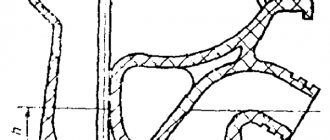Cleaning methods
The room is cleaned in different ways. You can use sewage disposal machines, chemical and biological agents.
Calling a sewer truck
When drugs cannot cope with a large mass of sewage, it is recommended to resort to the help of a sewer machine. The vacuum pump quickly pumps waste into the tank and cleans the structure at the dacha.
Chemicals
Fecal matter can be processed chemically.
Important: Many chemicals are harmful to the environment.
With added ammonium
Chemicals not only eliminate pungent odors, but also participate in the process of waste decomposition. The effectiveness of the product is lost if it enters an aggressive environment.
With added formaldehyde
Drugs with high toxicity contain highly carcinogenic formaldehyde. Recently, it is not recommended for use in fecal cleaning.
Biological products
The products actively participate in the process of biological disposal of feces. The drugs are available in dry and liquid forms.
Granular
The drugs are compact, economical, and easy to store. The product dissolved in water is poured into the toilet pit, where bacteria begin to multiply and cleanse the space.
Powder
The range of biological products includes powder septic tanks. They are produced in small bags, which is convenient for single cleaning cases.
The powder is pre-diluted in water, according to the instructions, and drained into the septic system.
In tablets
The tablet form is quite convenient to use. The tablet is thrown into the waste pit, where bacteria begin to activate and destroy the waste.
Liquid
The high concentration of liquid allows you to clean large volumes of closets. Once in the pit, the bacteria separate the waste into liquid and carbon dioxide.
Mechanical cleaning
For mechanical cleaning, it is recommended to wear protective gloves and a respirator. The manual process technology is as follows:
- tie a rope to the bucket;
- immerse the container in sewage;
- pour the waste into another container;
- move it to another place and bury it.
Mechanical cleaning can be done with a pump or by calling a special service.
How to remove odor from a country toilet
Now let's find out how to remove the smell from the country toilet. There are various effective techniques.
Ventilation features
Ventilation systems for country toilets are constructed from PVC pipes. It is attached to the surface of the wall of the building using clamps. Part of the pipe is placed under the hatch of the cesspool, and the upper element is located above the house. To prevent moisture from getting inside, a special cap is installed.
Additionally, to reduce the smell in the toilet in the country, a hole is made in the wall or closer to the floor.
https://youtube.com/watch?v=sgOKar5D8mg
Chemicals
Chemical compounds are actively used. The following types of drugs are recommended:
- Nitrate ones are considered the safest. Oxidizing agents contain active elements that help remove odors from country toilets.
- Ammonium agents are the most effective.
- Bleach is a budget option, but very toxic.
When coming into contact with such components, it is recommended to use gloves and a respirator. Such preparations make the mass from the cesspool unsuitable for fertilization. The advantage of the chemistry is that it can be added to the pit at different temperatures.
Folk remedies
When solving the problem of how to get rid of the smell in the toilet in the country, you can try natural remedies:
- Ash or sawdust can be added after each trip to the toilet.
- The cut grass is placed inside.
- Tomato tops and nettle grass absorb stench well.
The resulting compost is used as fertilizer.
Bioactive substances
Sanex, Micropan and Doctor Robik are especially popular. These products help destroy harmful microbes, neutralize waste and unpleasant odors. Bioactivators help reduce the volume of a cesspool over time. The products are sold in the form of powder, tablets and liquid.
When using biological agents, it is necessary to prevent chemicals from entering the pit. It is not recommended to use such drugs in late autumn or early spring.
Fillers with peat
If the question arises of how to remove the smell from a country toilet, you can try using peat. This material is suitable for processing waste into useful compost. Peat is able to absorb odors, loosen the mass and intensively process sewage.
The advantages of this method:
- Moisture absorption.
- Odor removal
- Preventing compression of mixtures.
- Safety in relation to the environment.
A peat dry closet can be an excellent alternative to bulky outdoor buildings.
A similar product is offered by companies such as Gera, Bio-Life and Agro-Balt. For proper functioning of the toilet, a compact container for collecting sewage is suitable. After visiting the bathroom, peat is poured into the tank. Purchased designs have a dusting function.
This container must be cleaned after 3-4 days. The waste is taken to a compost heap, where peat or soil is sprinkled on top. This option is ideal in areas with close groundwater flow.
When installing a peat toilet indoors, it is imperative to create a forced ventilation system.
Installation of septic tanks
In the first compartment, separation into liquid and solid fractions is carried out. Then in the second and third compartments more fine cleaning is performed. From the last compartment, the purified liquid enters the filtration fields. Water passes through the drainage layer into the ground.
Septic tanks with biological filters are capable of deeper cleaning. After cleaning, the liquid is drained to a pre-selected location.
How to choose and how biological products work
Biological products produced for the treatment of rural sewerage are colonies of living bacteria. They include:
- aerobic, anaerobic bacteria;
- organic catalysts;
- enzymes.
When choosing a cleaning product, it is recommended that you read the instructions for each product. When using, pay attention to the temperature range and the volume of the pit or tank.
Characteristics and types
The flexible hose for connecting plumbing is a hose of different lengths made of non-toxic synthetic rubber. Thanks to the elasticity and softness of the material, it easily takes the desired position and allows installation in hard-to-reach places. To protect the flexible hose, there is an upper reinforcing layer in the form of a braid, which is made from the following materials:
- Aluminum. Such models can withstand no more than +80 °C and retain functionality for 3 years. At high humidity, aluminum braiding is prone to rust.
- Of stainless steel. Thanks to this reinforcing layer, the service life of the flexible water line is at least 10 years, and the maximum temperature of the transported medium is +95 °C.
- Nylon. This braid is used for the manufacture of reinforced models that can withstand temperatures up to +110 °C and are designed for intensive use for 15 years.
The fasteners used are nut-nut and nut-fitting pairs, which are made of brass or stainless steel. Devices with different permissible temperatures differ in the color of the braid. Blue ones are used to connect to a pipeline with cold water, and red ones for hot water.
When choosing a water line, you need to pay attention to its elasticity, reliability of fasteners and purpose. It is also mandatory to have a certificate that prevents the rubber from releasing toxic components during operation.
Review of popular tools
Developers offer a variety of antiseptic and deodorizing preparations for cleaning fecal matter.
Microzim Septi treat
Liquid concentrate for processing organic waste, dilutes and decomposes feces into simple chemical elements and carbon dioxide, eliminates unpleasant odors.
Atmosbio
The bioactivator is suitable for all types of sewer systems. It converts waste into solid mineral sludge and water.
Sanex
The drug effectively cleanses the soil of accumulated contaminants and restores drainage properties. The substance reduces environmental pollution of the soil and improves drainage.
Bioactivator Green pine
The substance processes feces at high concentrations and lack of water. If antibiotics, chlorine and toxic substances get into the pit, the effect of the drug is reduced.
Argus Garden
The product neutralizes the contents of sewage collections in a short time. It also prevents infectious substances from entering the soil.
System Septic Maintainer DVT-360
A dry concentrate of non-toxic bacteria ensures rapid breakdown of feces and eliminates strong odors. Bacteria act on waste and are processed into water and recyclable fertilizers.
Biodom
The drug removes unpleasant odors and contains catalyst additives that speed up the waste disposal process. Helps restore the fecal processing mechanism after cleaning with aggressive chemicals.
Use of special means
Such methods do not provide complete cleaning, but they help to significantly reduce the volume of feces and, thereby, delay the time of mechanical cleaning.
Biological treatment
All over the world, different strains of bacteria capable of decomposing organic matter . The use of such products is completely harmless to both human health and the environment.
Waste generated as a result of bacterial activity can later be used as a safe organic fertilizer
The effect of these drugs is not lightning fast; the bacteria begin to work only after a while. In addition, only their regular use will lead to the desired results. A colony of bacteria can maintain its vital activity from a month to a year.
In order to use bacterial agents correctly, you should know that microorganisms:
- cannot tolerate household chemicals;
- ineffective in conditions of neglected, overcrowded and silted pits;
- die or hibernate at sub-zero temperatures.
Bioremediation products are available in the form of tablets, powders and liquids. Before use, you must carefully read the instructions for their use.
Bacteria in their “dry” form sleep, so they must first be “awakened”. Liquid mixtures are ready for use, but have a shorter shelf life.
Some popular biological products for cleaning cesspools:
| Name (release form, country of origin) | Mode of application | pros |
| Roetech K-47 (liquid, USA) | Shake and pour (one bottle per 2 m3) | Can handle petrified masses |
| "Doctor Robik 109" (powder, USA) | Dissolve in 5 liters of warm water and pour into the hole (1 bag per 1.5 m3) | Affordable price; also breaks down fats, carbohydrates, urea, etc.; suitable for treating sewage in the house; validity period up to 30 days |
| "Green Pine 50" (powder, France) | Pour water until the fecal matter is covered, fill the bag | High concentration of biocultures; environmental friendliness; validity period 7 days |
| BIOFORCE Septic 250 (powder, Thailand) | Dissolve 1 dose in 5 liters of warm water, pour into the hole | Universal septic tank; can be used when the pit is overcrowded; validity period up to 5 months; measuring spoon included |
| BioExpert (tablets, Poland) | Dissolve the tablet in 5 liters of warm water and pour into the hole | Versatility; economical - 1 tablet per 4 m3 |
| "Microzim Septi Treat" (powder, Russia) | Pour 3 buckets of warm water into the hole, pour out the powder (250 g for a volume of up to 2 m3) | Easily tolerates sub-zero temperatures; adapted to Russian soils |
| "Tamir" (liquid, Russia) | Pour into the hole (350 ml per 2 m3). If there is no moisture, add 10 liters of warm water | Versatility; high productivity |
Various biological products of foreign and domestic production
Chemical cleaning
The use of chemical cleaning agents for cesspools and toilets has a range of advantages . Among them:
- ease of use - you just need to pour the reagent into the pit;
- rapid liquefaction of fecal matter;
- high efficiency in combating siltation;
- Possibility of use at any time of the year.
Along with this, there are also a number of disadvantages that call into question the advisability of using chemicals. First of all, we are talking about environmental pollution, the penetration of harmful chemical elements into soil and water. Liquid from the cesspool must be collected in special containers and removed for disposal. Due to their high carcinogenicity and toxicity, some substances (formaldehyde, bleach, etc.) have practically ceased to be used. In this regard, nitrate oxidizers are less harmful, but they are distinguished by higher prices.
When using such products, it is necessary to protect your hands and face from contact with chemicals.
Traditional methods
You can clean the pit from waste using available folk methods.
Tomato tops
Once or twice a week, the tops are thrown into the pit. It eliminates unpleasant odors and repels insects. The resulting natural compost can be used in the garden.
Mint with basil
Plants with a strong and persistent odor cancel out unpleasant odors. It is necessary to add leaves after each visit to the toilet.
Nettle
The plant absorbs ammonia, destroys harmful microorganisms, and neutralizes unpleasant odors. A new portion should be added once a week.
The product absorbs odors as it is a good absorbent. It does not interrupt, but absorbs the unpleasant aroma. It can be used as compost for fertilizer.
Coniferous sawdust
Sawdust from spruce and other coniferous trees has a rich aroma. They should be thrown into the pit after each visit.
Basic methods for cleaning an outdoor toilet
Today, there are two most popular and effective ways to clean the cesspools of private toilets - physical removal of sewage and treatment using special means. Maximum efficiency will be guaranteed when using both methods in combination .
Physical removal of waste
Methods for physically removing sewage from cesspools include:
- manual cleaning;
- mechanical cleaning (using fecal pumps, sewage disposal machine).
Manual cleaning
Despite the great complexity and unpleasantness of such a process, this method continues to be the most common among summer residents. The operating algorithm is as follows:
- Choose the appropriate protective equipment - clothes that you won’t mind throwing away later, rubberized gloves, rubber boots, safety glasses, a respirator (gas mask). If you need to work directly in a pit, you should think about a chemical protection suit or waders and insurance (a belt with a long rope tied to it).
- Prepare the tool. Many people think that a bucket is best. But using a bucket with a rope is not always convenient. If it is suitable for collecting sewage with a liquid consistency, then it will not be able to scoop out viscous slurry, and especially silted masses, and no weighting brick will help here. For such work, it is best to use a scoop on a long stick (you can nail a bucket) and a container for collecting waste. Bayonet and shovel shovels can also be useful. To thicken the consistency and reduce the stench, you can use sawdust or peat.
- Organize a place for disposal of recovered waste. As a rule, a compost pit is dug on the site, in which sewage is mixed with peat, sawdust and soil.
- Scoop out the feces.
It is not recommended to work in a pit alone or even together without insurance. Someone must be at the top and provide backup. Methane is very dangerous and insidious - it has no odor, poisoning with it can lead to sudden loss of consciousness and death if help is not provided in time.
After completing the procedure, traditional methods are used to eliminate the unpleasant odor. For example, tomato tops, sawdust, mint and other aromatic herbs are thrown into the pit.
clean the cesspool manually annually after the end of the summer season , at least at least once every 2-3 years.
Mechanical cleaning
This type of cleaning involves pumping feces from a cesspool using special equipment:
- fecal pumps (it is not practical to use drainage and water pumps for such activities). Their use should theoretically make cleaning safer, simpler and easier. As for facilitating the process, in practice it sometimes turns out the opposite. This is due to siltation of feces, which the pump cannot suck in, so it is necessary to add water to the pit and use a shovel to mix the mass until it has the consistency of slurry. For sewage, you should prepare in advance a closed container with a wide neck for the hose from the pump. In addition, it should be taken into account that the amount of waste with this method will at least double, and you will need to solve the problem of how to get rid of the fetid slurry;
- sewer trucks . This option may well be the ideal solution to the problem - the summer resident simply orders and pays for the service, and the specialists do the rest. Vacuum trucks drive up to the pit in a car, lower a hose into it and pump the contents into a tanker truck, after which they take it away and dispose of it. However, in reality, not everything turns out to be so simple. Firstly, there may be no access to the cesspool (the toilet is located in the depths of the garden). Secondly, the high cost of services. Considering that many country toilets have small pits (less than 1 cubic meter), and payment is taken not for the volume pumped out, but for the number of trips, using the services of vacuum cleaners turns out to be unprofitable.
To facilitate access, in villages, sanitation workers use special composite hoses that allow them to pump out feces from cesspools at a distance of up to 50 m from the road
A significant disadvantage of the first complete pumping of feces in several years is the loss of the ability of the pit walls to absorb liquid and the need to pump out waste annually in the future.
How to remove an old, unnecessary outdoor toilet
Before starting to dismantle the old premises, tools are prepared and the sequence of the process is drawn up.
Dismantling tools
In order to demolish an old structure, you need to stock up on tools. To perform this work, you cannot do without a sledgehammer, chainsaw, ax and crowbar.
Means of protection
To avoid injury during dismantling, it is recommended to wear thick gloves, glasses, and a hat. Shoes with thick soles are required on your feet to avoid injury from old protruding nails.
DIY demolition procedure
When dismantling a structure, consistency is important. Some rooms are connected to country sewerage and septic tanks, so it is necessary to carry out dismantling so as not to clog the drain.
Dismantling begins from the roof, then the door is removed. After this, the frame is dismantled and the floor is removed. Garbage can be used to fill the cesspool.
Fighting odor
Once a structure is demolished, a foul odor may spread. It can be removed with powdered bleach or bioactivators. To do this, the surface of the pit is filled or filled. The procedure not only removes odor, but also accelerates the decomposition of waste.
How to fill a cesspool
The old pit is filled with various available means. These include:
- construction garbage;
- sawdust;
- pruned branches;
- slag;
- sand.
You can use ordinary soil, which is used with organic matter as fertile humus.
How often should you clean
Standard structures with a volume of 1.5-2 cubic meters do not need cleaning for up to 10 years. You can remove waste once a season, so the process is faster and not so difficult. With the mechanical method, fecal matter is pumped out depending on the fullness of the pit.
You can clean your dacha building in different ways. Owners of dachas and private houses independently decide which methods are best to use in order to create comfortable conditions and not harm the environment.
Source
How to determine when it's time to cleanse
Cleaning the toilet outside should be done in a timely manner. If the work is done manually, then it is better to start it at the end of the summer season, even if the volume of contents is small, you should not wait several years. Chemical and bacterial agents are used annually. For those who call a sewer truck for pumping, the signal should be a hole that is more than half full.
Important! These recommendations cannot be ignored. A toilet that is uncleaned for a long time is an ideal environment for the proliferation of harmful microbes, attracts rats, and releases toxic gases. Their constant inhalation can lead to poisoning. Garden plantings absorb harmful substances from the air and soil. The stench creates discomfort for site owners and their neighbors, and this is a serious nuisance.
How to clean a toilet in a country house with your own hands
Even before installing the toilet, the owner of the dacha should think about the upcoming cleaning. There are 5 common methods. If you intend to use the services of a special vehicle, then provide free access to the dacha plot and structure. When cleaning manually, it is important to think about where to dispose of the waste.
Mechanical cleaning of a toilet in the country
The mechanical cleaning method involves removing impurities manually. Usually the procedure is performed with a bucket. An area for storage is first prepared at the dacha. You can dig a deep hole in a secluded corner, fill it and cover it with earth on top.
The cleaning process consists of the following steps:
- If the contents of the pit are liquid, sawdust or peat is added as a thickener. Mix everything with a long-handled shovel and give the filler a little time to swell.
- A rope is tied to the bucket. Additionally, you can lay brick. The weight will make it easier to immerse the bucket.
- Further actions involve scooping up the contents of the pit and unloading it into the designated area.
The process of manually cleaning the toilet can be simplified with a fecal pump. However, it will not handle a thick mass. You will have to pump water inside the cesspool and stir the contents with a shovel until it turns into slurry. Pumping with a fecal pump simplifies and speeds up the process of cleaning the toilet, but the amount of sewage increases over time. It is necessary to first carefully consider where to pump out.
The video tells more about cleaning the cesspool:
How to clean an outdoor toilet in a country house using biological products
A modern way to clean a toilet is to introduce beneficial bacteria into the cesspool. Manufacturers offer a variety of biological products produced in the form of powder, liquid, and tablets. Dacha owners have long appreciated the work of the drugs and apply them annually at the beginning of the season.
Biological products are a collection of bacteria in a dormant state. After entering a favorable environment, they awaken, begin to multiply and process organic waste.
The activity of bacteria is recognized by the disappearance of the unpleasant odor in the toilet. Over time, the contents of the pit will decrease in volume. When biological products are used correctly, organic waste decomposes into water and sediment. Liquid is pumped out to water trees. Solid sediment is removed mechanically and stored in a compost heap to obtain fertilizer.
How to clean a toilet in a country house with chemicals
It is advisable for dacha owners to use chemicals in extreme cases. One of them is the critical overflow of the toilet pit in winter. It is impossible to clean it manually in frosty conditions; a sewage disposal machine will not cope with the frozen mass. Even if biological products were used in the summer, the bacteria die in the winter.
How to manually clean a country toilet
Manual cleaning involves removing the contents using buckets with rope or other suitable containers. The bucket is lowered down and the slurry is scooped up. The hardened substance is removed with a shovel. The waste is mixed with soil, thereby fertilizing the soil, or buried deep somewhere on the border of the garden.
The manual method is the most unhygienic and unpleasant. Everyone who resorts to it must protect their hands and face (you will need gloves, a mask or a respirator), wear high rubber boots, and at the end be sure to change clothes and take a shower. Sometimes you have to completely immerse yourself in a hole, and in this case you cannot do without a chemical protection suit. This is one way to clean an outdoor toilet in a private house without pumping.
Recommendations from experts
To carry out the cleaning process more efficiently, professionals recommend using only specialized pumps with a cutting mechanism that grinds solid particles. Which will greatly simplify pumping.
In order to reduce the number of cleaning activities, and therefore reduce costs, when building a toilet, equip the pit with a filter bottom. If a container is used for this, it should not be sealed. You just need to make a filter layer of at least a meter of pebbles or gravel.
You should also use antiseptics to prevent the emergence and spread of harmful microorganisms.
Source
Using a fecal pump
Another mechanical option for cleaning a toilet in the country with your own hands is to use a drainage pump. The main condition is sufficient power to pump out feces. It will be necessary to provide a reservoir where waste will be drained, transportation and a disposal site. Some owners of private farmsteads drain the contents of cesspools in forest belts or near water bodies, which is strictly prohibited.
What to do if the country toilet is overcrowded and you can’t cope with the task yourself? Call the vacuum cleaners. They have special equipment at their disposal (a vacuum pump, cutting mechanisms for grinding debris in the form of stones and pieces of wood) and a tank for transportation. The cost of services is significant, but in an emergency situation, when the toilet tank is full, and the question of how to clean the country toilet becomes more than urgent, it makes sense to invest in solving the problem.
How to get rid of the smell from an old toilet
The specific unpleasant odor of a toilet can persist for a long time even after the building has been demolished and the pit has been filled. Therefore, after dismantling the building, it is worth choosing an affordable way to get rid of unpleasant odors.
- The most traditional method, which still finds adherents today, is powder Bio products for drainage pits and toilets
bleach. It can be poured into the pit in a thin layer from time to time, trying to cover the entire surface of the waste accumulated there. If you use the toilet infrequently, this method of disinfection is quite effective, but when cleaning the pit, the waste will have to be taken to a specially designated place, since it is better not to use it for compost.
- Innovations include various bioactivators that promote waste decomposition. The process proceeds thanks to the presence in the structural formula of these drugs of specially cultivated microorganisms (aerobic bacteria) and enzymes - a type of enzyme that catalyzes the decomposition reaction under normal conditions.
The result is an odorless liquid, drained into the drainage, and a solid sediment, which is significantly smaller in volume than the amount of waste that was before processing. The solid fraction in the form of sludge can be placed in a compost heap to obtain organic, environmentally friendly fertilizer, used in the country as plant nutrition.
The use of any drugs to eliminate odor in the toilet is preceded by careful study of the instructions. There are several types of such funds.
Atmosbio effectively eliminates odor and decomposes all layers that accumulate Bioactivator Atmosbio
in the cesspool, including bottom sediments and surface crust. Since this drug is active only in an aqueous solution, when using it in the toilet you must first pour the powder into the pit and then fill it with water. The contents of the pit are checked from time to time to prevent drying out. Atmosbio is usually sold in boxes containing 24 portioned sachets. The contents of one of them are enough for about a week for a family of three people.
For dacha conditions, Micropan – “Cesspool” in tablets – is especially popular. Two days after using the drug, the smell in the toilet weakens, flies disappear, and the level of sewage decreases. The entire volume of waste is processed in about a month. The drug is added taking into account the fact that one tablet is enough to process up to 2000 Cleaner Doctor Robik liters of waste.
Cleansing using traditional methods
Since ancient times, plants have been used in villages to remove sewage from toilets, and our grandfathers knew how to clean a sewer pit in a private house using peat and sawdust.
Tomato tops
The leaves and stems of tomatoes left after pinching are thrown into the toilet in order to get rid of the stench. The tops destroy fly larvae and repel adult flies.
Mint with basil
Spicy herbs have a deodorizing effect due to the high concentration of essential aromatic substances. Mint and basil are used most often.
Nettle
Nettles are placed in the toilet in small bunches once a week to combat the smell. The plant accelerates the process of decomposition of sewage.
One of the properties of peat is to neutralize stench. The dry matter absorbs odor and mixes with sewage, making it easier to compost.
Coniferous sawdust
The use of pine sawdust allows you to purify the air and make the contents of the pit more viscous for subsequent manual cleaning.
Use of biological products
Recently, biological preparations for outdoor toilets have become popular. They contain living microorganisms (for example, saprophytic flora in combination with enzymes) that promote rapid decomposition of masses, as well as paper, small litter, bottom sediment, and hardened crust.
The bioformula disinfects the toilet and completely eliminates unpleasant odors. Absolutely safe for the environment and humans, they are highly effective and solve the problem of how to reduce the contents of a country toilet. The most important thing is to choose the right product and quantity so that the bacteria can cope with the volume of feces.
Chemical reagents
Chemistry is resorted to in extreme cases. It is better to prefer any other method of cleaning the closet without pumping or to spend money on sewage disposal, but when in winter the tank is overfilled with waste, it will not be possible to eliminate the accident without chemicals. Add the reagent strictly according to the instructions.
The substances completely liquefy the frozen and dried mass, after which it is much easier to remove. The waste becomes toxic due to the formaldehyde content and is not suitable for composting or digging, so you will have to think about its safe disposal. Among the harmless components for chemical cleaning are products based on nitrate oxidizers.
How to dispose of an outdoor toilet
It is not always possible to return the closet to its previous appearance. The pit was too flooded, its walls collapsed, cleaning was not carried out for a long time, the cabin became unusable - all this serves as a basis for the disposal of the structure. How to clean a country toilet quickly and safely? Experts are sure that only if a certain procedure is followed.
Dismantling tools
The set of tools depends on what materials the building is made of. It is more difficult to disassemble a cinder block booth than a wooden structure. In any case, a crowbar, axe, saw, sledgehammer and nail puller will come in handy. To dismantle the masonry, you will have to use a lot of force and use a hammer drill.
DIY demolition procedure
During the demolition of the cabin, the hole in the pit or the toilet seat is covered with plywood. Dismantling begins with the roof, then moves on to the doors, and only then begins the frame. If there is insulation, it is removed first. The last thing to remove is the toilet seat. There remains a hole that must be properly filled.
Attention! The surviving building materials are used in the future: the boards will be useful for arranging warm beds, and the blocks will certainly be suitable for building other structures or strengthening existing ones. A very dilapidated toilet is being demolished with a sledgehammer. The resulting wood chips can subsequently be used to fill the cesspool.
Fighting odor
Even after cleaning the toilet, an unpleasant odor lingers in the air for a long time - up to several months. It can intensify due to the filling of the soil with groundwater or melt water, which is why it is so important to immediately take care of its elimination even at the stage of eliminating the country toilet.
In this situation, the use of the above-described biological products, peat, sawdust, and a small amount of bleach is allowed. You should not bury a hole filled with feces. It is better to make an effort, remove as much dirt as possible, and only after that start working.
Pumping frequency of country toilet
There are some factors that determine the frequency of cleaning activities.
- Firstly, how often the toilet is used and by how many people. For example, someone carries out this procedure every month, while for others once a year is enough.
- The design of the pit itself is also of great importance. If the hole has a concrete bottom without any holes, then naturally it will fill much faster, because the liquid will have nowhere to go.
It is advisable to monitor the filling of your toilet and pump it out when the sewer is about seventy percent full.
Note: As practice shows, cesspools are pumped out on average once every two to years.
There is no need to neglect the timely cleaning of your toilet, as this is a fairly important procedure. If this is not taken into account, this can lead to an emergency situation, namely, overfilling the tank and, as a result, facilitating the proliferation of harmful microorganisms. If they get into the ground, they can negatively affect the health of living people.











